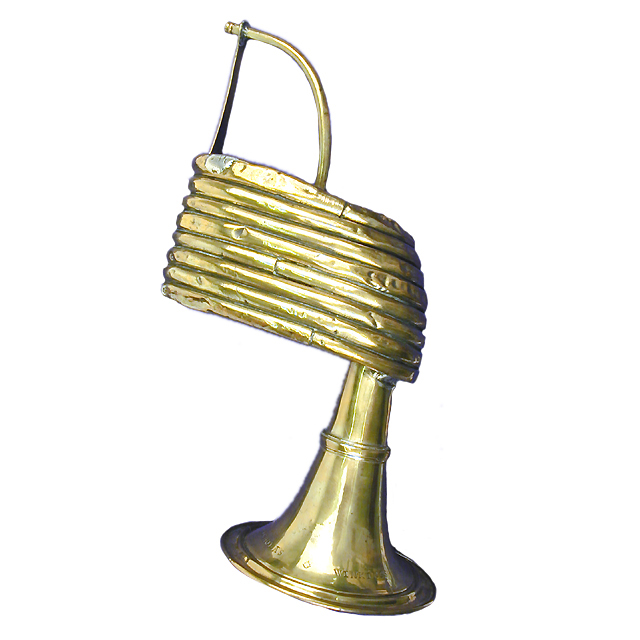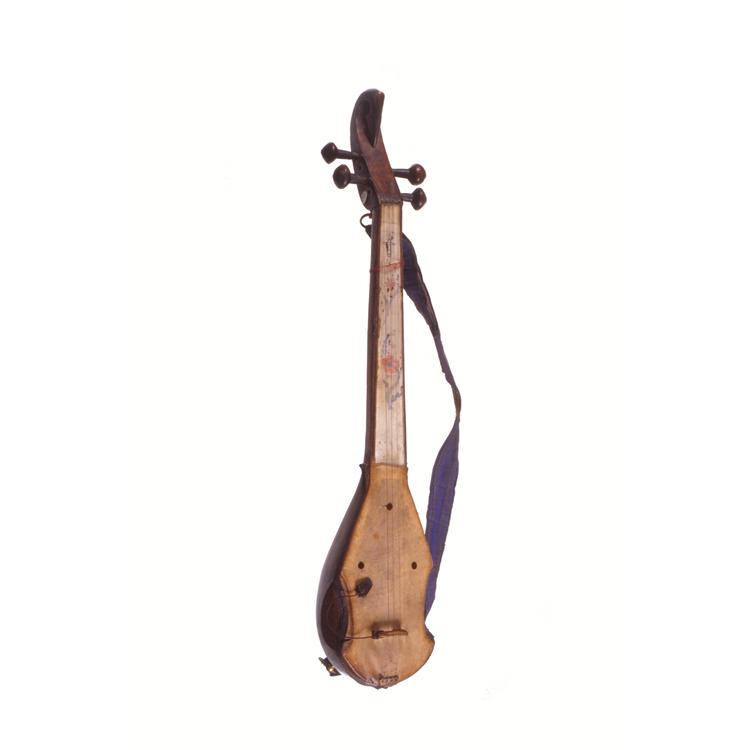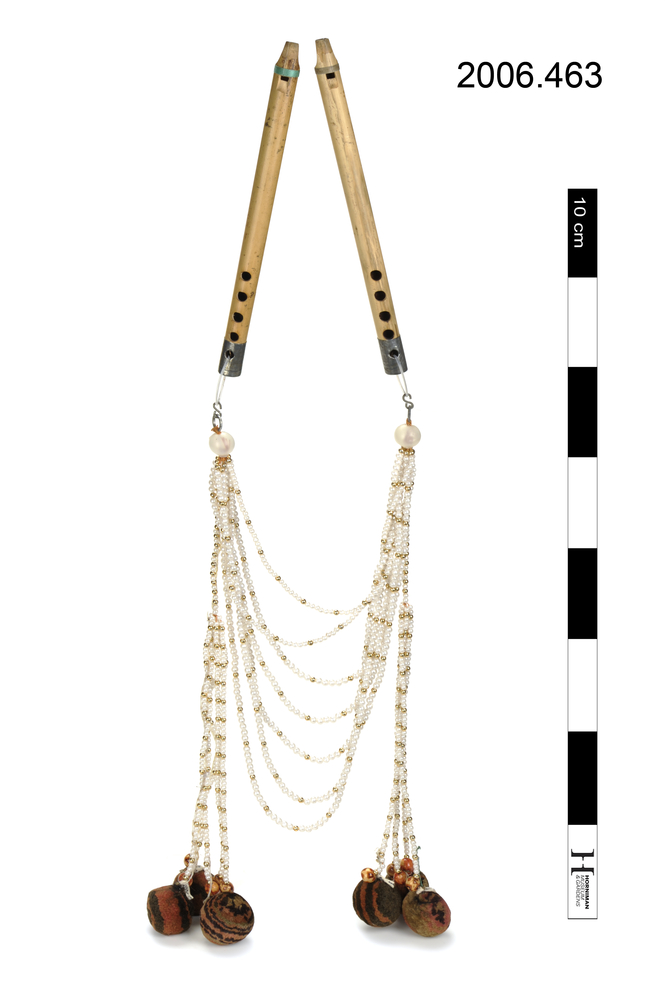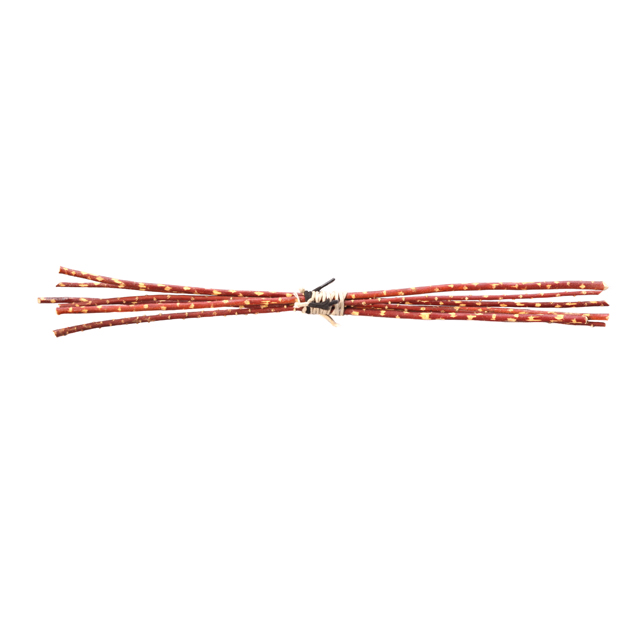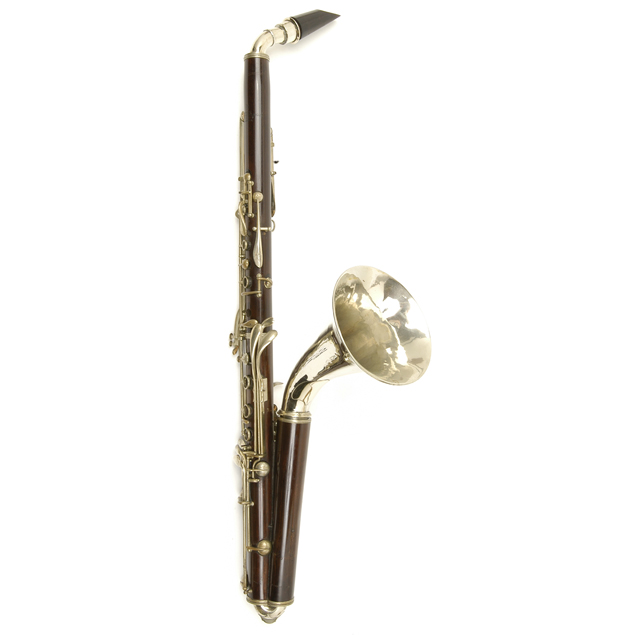
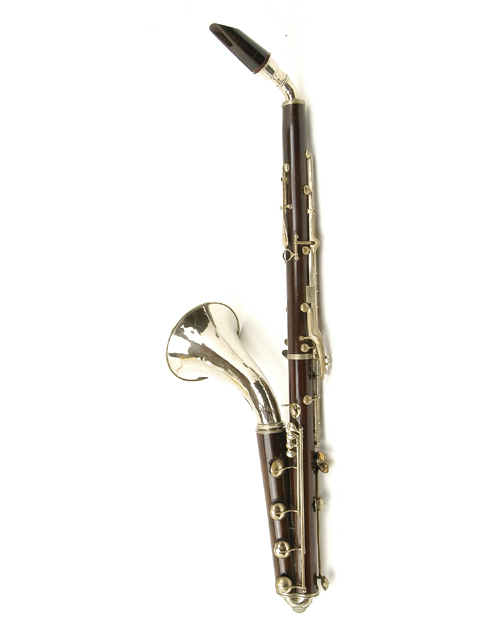
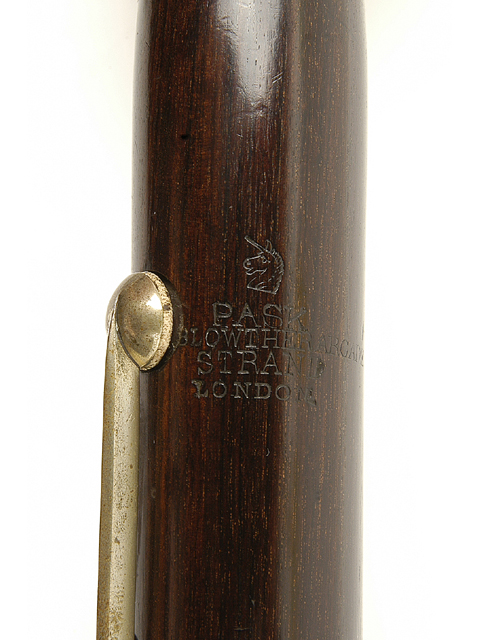
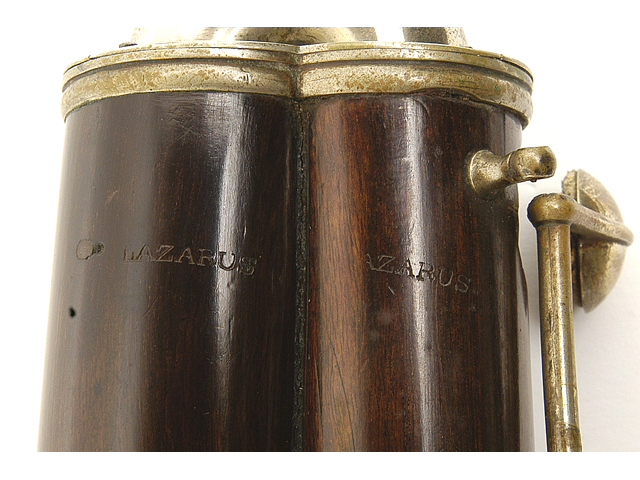
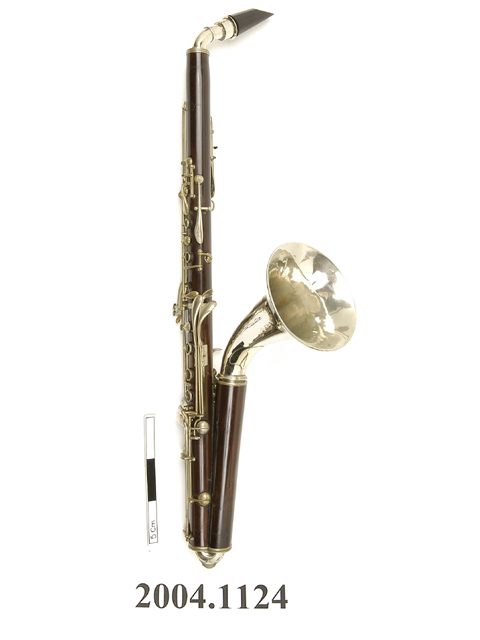
Basset horn in F. Straight model. Dalbergia melanoxylon (African blackwood, grenadilla) with nickel silver-plated keywork, ferrules, crook and bell. Keys have leather pads. String-lapped tenons. Boehm system. Ascending lower joint has four basset keys which take compass chromatically down to the written low C. The lower joint doubles back in the style of a kasten. It is pinned to the main tube (rather than being enclosed) and lies to the left. The bell faces slightly to the rear. Upper joint and lower joint stamped: PASK/.LOWTHER ARCADE/STRAND/LONDON; A unicorn's head emblem appears above each inscription. Each joint is also stamped: LAZARUS; Referring to the famous 19th century clarinet virtuoso Henry Lazarus, who once owned the instrument.
overall: 710 x 120 x 120 mm; bell: 124 mm : measurements given by the Documentation section.
This is an early example of a Boehm system basset horn. Because of its historical significance, it appears in two books about the history of the clarinet family: those by Jack Brymer and F. Geoffrey Rendall. The latter writes: 'The first basset-horn with Boehm fingering noted by the writer is branded Pask, London - a maker active between 1842 and 1870 - and was formerly owned by Henry Lazarus. It is probably of French workmanship, since the Boehm clarinet was comparatively unknown at this period in England, and the keywork is of typically French design. The body is shortened by providing the basset-keys with a separate tube, parallel to the main body-joint and jointed to it with long metal pins: the bores are united at the bottom with a U bend of metal'.



